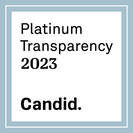|
By Lawrie Mankoff During this uniquely challenging school year, teachers are working hard to bring sustainability-focused activities and lessons to students learning from home. Energize Schools is working with educators to include a wide range of environmental topics in their virtual classrooms through engaging, hands-on projects. Over the summer, the Energize Schools team led four virtual teacher trainings on climate change, renewable energy, energy auditing and air quality. Here are five sustainability activities featured in the teacher trainings that you can use for remote learning: 1. Greenhouse effect simulation An online simulation is a great way to introduce students to the science behind climate change. We use simulations from the Concord Consortium in our curriculum to help students gain an understanding of the greenhouse effect. Students can observe visual representations of carbon dioxide and heat moving through our atmosphere, and the impacts humans have by releasing greenhouse gasses. 2. Easy energy auditing Energy auditing may seem like a difficult project to bring to students in their homes, but it can be as easy as instructing students to observe the appliances in their space. After making a list of energy users in their homes, students can check appliances for tags with power rating, use data in SEI curriculum on average energy usage, or research online to calculate their energy consumption and costs. 3. Explore renewable energy by building a water wheel A simple way for students to model a real world source of renewable energy is by creating their own water wheel out of whatever household materials they choose. Students can get creative using different materials to create their own water wheel, and learn how these models compare to real world hydropower. Marc Wheeler, a teacher from Woodside High School, made his water wheel using a CD and candle holders! 4. Learn about environmental justice through air quality maps
CalEnviroScreen is a powerful tool that allows students to see what areas of California are most burdened with pollution, alongside population characteristics including race and economic status. In exploring CalEnviroscreen air quality maps, students can see a stark overlap between the areas most polluted and where black and brown communities live today as a result of historical redlining and other discriminatory housing practices. 5. Have your students lead a energy conservation campaign Students can make a difference in protecting the environment by encouraging their communities to save energy. A virtual campaign makes use of social media or other online platforms to spread the word about the importance of reducing our energy usage. One way to have your students explore conservation is through the Energize Schools 2020 Energy Challenge! All of these activities and more are in the Energize Schools distance learning curriculum, which is free to all teachers. This curriculum can be requested through our distance learning page, and California teachers can also schedule a one-on-one session to plan their virtual sustainability lessons.
0 Comments
Leave a Reply. |
Get In TouchDo you know an environmental leader who should be featured in a story? Reach out to [email protected]. Categories
All
Archives
April 2024
|
Get Involved
|
Contact Us
|
SEI Headquarters
100 Smith Ranch Road, Suite 124 San Rafael, CA 94903 Phone: (415) 507 - 2181 Email: [email protected] States where we work:
Arizona California Colorado Indiana Maryland New Mexico New York New Jersey North Carolina Oregon Washington Virginia |
ConnectSubscribe to the SEI quarterly newsletter to get involved and receive updates
|
SEI is a 501(c)3 nonprofit organization.


 RSS Feed
RSS Feed

